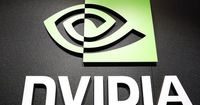Nvidia, the Silicon Valley titan at the heart of the artificial intelligence revolution, has once again defied expectations by posting record-breaking results for the quarter ending in July 2025. The company reported a staggering $46.74 billion in revenue—a 56% leap from the same period last year—alongside an eye-popping $26.42 billion in profit, up 59% year-over-year, according to multiple sources including AP, Reuters, and The New York Times.
These numbers not only surpassed Wall Street’s already lofty forecasts but also underscored Nvidia’s central role as the bellwether of a two-year-old AI boom that has sent the U.S. stock market to dizzying new heights. Since the launch of OpenAI’s ChatGPT in late 2022, Nvidia’s chips have become the backbone of the data centers powering this technological surge. The company’s market capitalization has soared to over $4 trillion, making it the world’s most valuable public company and a key driver of the S&P 500’s 69% gain since the end of 2022.
Yet, even with these blockbuster results, Nvidia’s stock price slipped more than 3% in after-hours trading on August 27, 2025. Why the dip? As AP and Al Jazeera report, the answer lies in the sky-high expectations attached to the chipmaker. “Saying the stock was priced for perfection would be an enormous understatement,” remarked Investing.com analyst Thomas Monteiro. After all, Nvidia’s share price has multiplied over 11 times since the start of 2023, and is up more than 30% in 2025 alone.
The company’s data center division, responsible for the much-hyped AI chips, posted $41.1 billion in revenue—a 56% increase from last year but just shy of the $41.3 billion analysts had hoped for, according to FactSet Research. Still, Nvidia’s profit of $26.4 billion, or $1.08 per share, handily beat analyst predictions. And looking ahead, Nvidia forecasted $54 billion in revenue for the August-October quarter, a 54% jump from a year ago and slightly above market expectations.
Jensen Huang, Nvidia’s charismatic CEO, was upbeat on a call with analysts. “We are in the beginning of the buildout,” he said, predicting that spending on AI infrastructure could reach $3 trillion to $4 trillion by the end of the decade. Production of Nvidia’s most advanced platform, Blackwell Ultra, is ramping up “at full speed,” Huang added, with demand described as “extraordinary.”
But even as the AI race accelerates, Nvidia faces formidable challenges—especially when it comes to China. Earlier this year, President Donald Trump imposed a temporary ban on the sale of Nvidia’s chips to China, a move that the company said could cost it $8 billion in sales from May through July. The ban was lifted in early August after intense lobbying by Huang, but with a catch: Nvidia must now pay 15% of all China-derived chip revenue to the U.S. government. “If I’m going to do that, I want you to pay us as a country something, because I’m giving you a release,” Trump recounted at the White House, referencing his negotiations with Nvidia.
Despite the removal of the ban, Nvidia’s most recent earnings report did not include any sales to China, as Beijing has recently urged local firms to avoid doing business with the U.S. chipmaker. This complicates Nvidia’s prospects in the world’s second-largest economy, though some analysts, like those at The Kobeissi Letter, speculate that even a partial return to the Chinese market could send Nvidia’s stock soaring once again.
Meanwhile, the broader AI sector continues to fuel economic growth. According to Pantheon Macroeconomics, AI-related spending contributed a 0.5 percentage point boost to U.S. annualized GDP growth over the first half of 2025. Tech giants like Microsoft, Meta, and Amazon are pouring billions into AI infrastructure, underpinning Nvidia’s stellar performance and the wider market’s optimism.
Still, not everyone is convinced that the AI gold rush is sustainable. In recent weeks, prominent voices have sounded cautionary notes about the sector’s future. Torsten Sløk, chief economist at Apollo, warned that the current AI bubble may even surpass the infamous dot-com bubble of the late 1990s. Sam Altman, CEO of OpenAI—the company that kicked off this frenzy with ChatGPT—struck a nuanced tone in a recent interview with The Verge: “Are we in a phase where investors as a whole are overexcited about AI? My opinion is yes. Is AI the most important thing to happen in a very long time? My opinion is also yes.”
The numbers reflect this tension. Although Nvidia posted triple-digit revenue growth for five consecutive quarters between mid-2023 and 2024, the pace has slowed in recent quarters as annual sales ballooned from $44 billion in fiscal 2024 to a projected $204 billion this fiscal year. Delivering the kind of growth needed to push Nvidia toward a $5 trillion market value is becoming increasingly daunting—especially as expectations remain sky-high and investors grow wary of any sign of deceleration.
To signal confidence in its future, Nvidia’s board approved a $60 billion stock repurchase plan. But questions linger: Will the AI revolution continue to drive such explosive gains? Or is the market due for a reality check reminiscent of the dot-com bust?
For now, Nvidia remains the undisputed king of AI chips, with its fortunes closely tied to the fate of an industry that’s both exhilarating and unpredictable. As the company ramps up production and eyes new opportunities—even in the face of geopolitical headwinds—the world watches to see whether the AI boom will live up to its promise or prove, as some fear, to be just another bubble.
Whatever the outcome, one thing is clear: Nvidia’s journey is far from over, and its results continue to set the pace for the entire technology sector.






